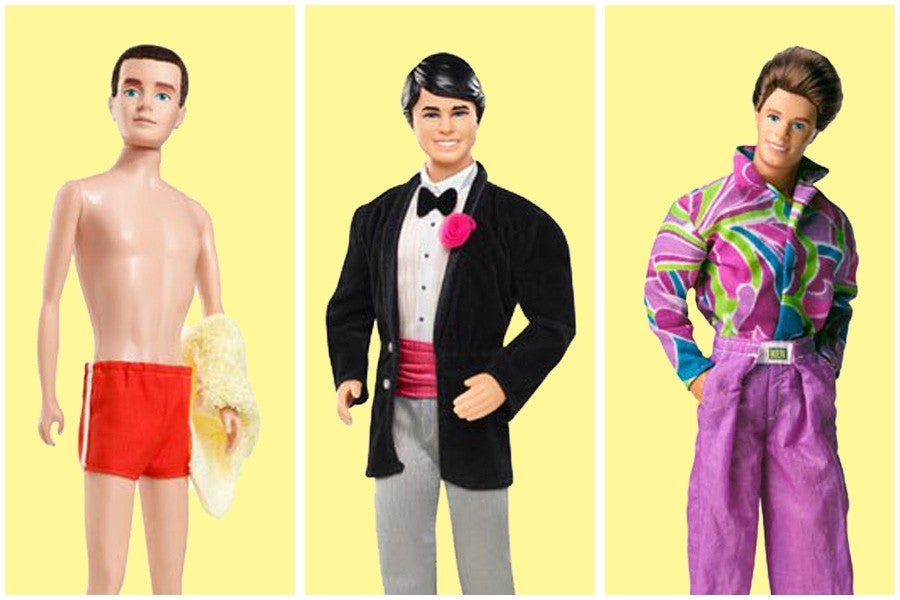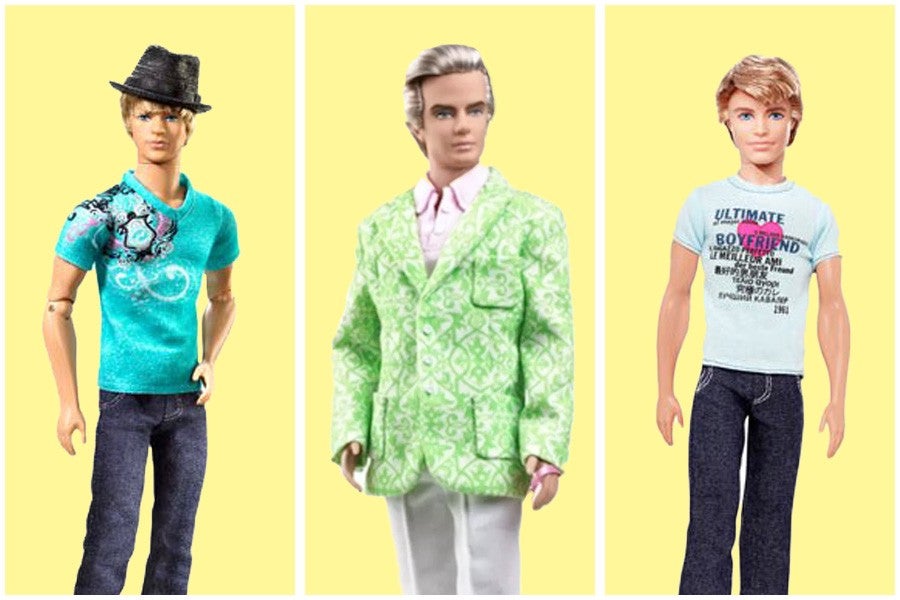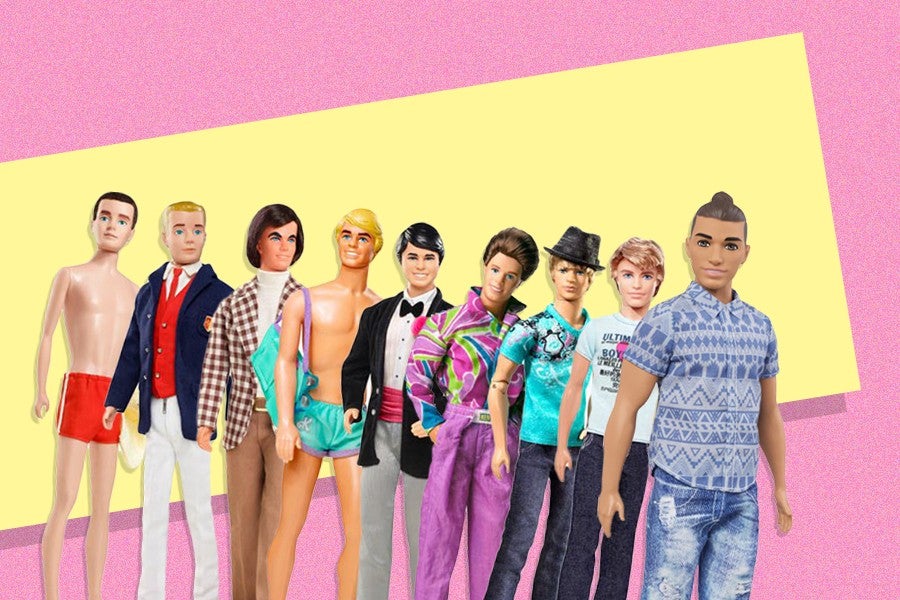Last week, Mattel announced the release of 15 new Ken dolls to update the lineup, including seven different skin tones (Asian, African-American included); three body types of slim, original and broad; and nine new hairstyles, including corn rows and a man bun. The internet has had a pretty good time mocking them, with nearly all the animus and bewilderment reserved for the Man Bun Ken doll, which sports the most polarizing haircut known to, well, man.
Does man bun Ken doll also come with a Soul Cycle membership, vintage record player, and $50,000 in student loan debt? pic.twitter.com/ulEwGSxxb1
— Emily Jashinsky (@emilyjashinsky) June 20, 2017
Every one of the new Ken Dolls is a different bartender who has ignored me
— Mara “Get Rid of the Nazis” Wilson (@MaraWilson) June 21, 2017
why…why are all the new Ken dolls youtubers pic.twitter.com/x7DDeJf9bN
— scarinscafe (@erinscafe) June 21, 2017
The new "Man Bun" Ken doll comes with shirt, shoes, and keys to Barbie's car that he's driving until he "gets back on his feet again." pic.twitter.com/gYmXwR9WEc
— Ben Siemon (@BenjaminJS) June 20, 2017
Man-bun Ken doll just interrupted me to tell me that Bernie would have won. pic.twitter.com/Mnu8pAXV7F
— Sexy Rigged Election (@NicCageMatch) June 20, 2017
Based on the reactions you would think Barbie’s reliable beefcake boyfriend has only looked one way forever. But a quick look at Ken’s aesthetic evolution shows that he has been continuously tweaked and modernized for the current era.
1961 Original Ken
He’s a basic all-American bro who isn’t aggressively buff.
1980s Ken
He’s stylish and aspirational.
1990s Ken
This Ken is beginning to look a little more woke—more at home at a rave than a beach party, or ready to stand in as an extra in Night at the Roxbury.

2004 Ken
This Ken is, to put it mildly, a douche—then again, he always was, arguably.
2011 Ken
In 2011, Mattel introduced a Palm Beach Sugar Daddy Ken as a collector’s item to much consternation, until it was clarified that he was only daddy to a dog.
Another 2011 Ken:
That same year, Mattel introduced the “Ultimate Boyfriend” Ken, who would repeat your favorite phrases back to you.

“So what’s the big deal?” Bobby Box at Playboy asked last week, about this new diverse lineup. Perhaps the big deal is that this is confirmation that masculinity really no longer has a singular definition. Like women, men are also not a monolith, and Mattel is simply catching up.
Other men have noted in reactions that for all the ways Ken may been portrayed as culturally different throughout the years: “Never before has anybody dared to mess with those sculpted pecs,” Joe Shute notes at The Telegraph. (Notably, for all his cultural variations, Ken has only previously white.)
It may have taken 56 years for men to get a new body and skin tone, but Ken has largely been given external makeovers and never internal ones. He has always been a malleable, generic Insta-dude inserted into Barbie’s life. Even media depictions give him a kind of blandly accommodating personality. In Toy Story, he’s a fun, dumb beefcake; in Life in the Dreamhouse, he’s an eager puppy always trying to make Barbie happy.
Even today’s memes, which imagine Ken as every new kind of douche, from fuckboi to Soul Cycler, are projections. But hasn’t that always been the point for Barbie and Ken? Ken always seemed like a purposely blank canvas so that girls could insert what personality they wanted for him, just as Barbie’s dizzying array of outfits and professions give girls the opportunity to play dress up in every imaginable iteration. The fact girls on average had seven Barbies for every one Ken prove that he was basically a cardboard cutout to prop up the scene of Barbie’s life.
Proof of this comes in a recent GQ piece trying to pin down Ken’s actual personality, where Caity Weaver asks the Mattel folks over and over again to describe him:
…Ken is the carefully calibrated ideal complement to Barbie — a blank, smiling man who does not threaten the stardom of the most intelligent, talented, rappin’ rockin’ princess astronaut in all of Malibu. Ken is “nice,” the members of the Barbie team will tell me over and over when I ask them to describe a doll’s personality: “a nice guy”; “a solid dude”; and, most damningly: “I picture him kind of Ryan Seacrest-y.”
These modernizing moves, Weaver notes, are finally giving Ken “some depth.” But the key word here is, of course, “some.” We have no more information about Ken’s inner life than we ever did (or Barbie’s, for that matter). He just now has a man bun, so we can infer that he likes cold brew and podcasts.
It’s noteworthy that men don’t like how they’re being portrayed via this doll, but is that important? It’s still mostly little girls who play with Barbies and Kens, after all. And it’s feminists who’ve long been fighting the fight of expanding Barbie’s universe to include more updated, modern values, or at least careers. If Ken’s latest makeover finally means Barbie can pick from a better range of possible boyfriends — ones she is actually likely to encounter in real life — that seems like a positive thing for the future young women that play with her.
That said, they’ve always both been, at best, blandly aspirational fashion plates—change the outfit for either of them, and you still haven’t changed that.

